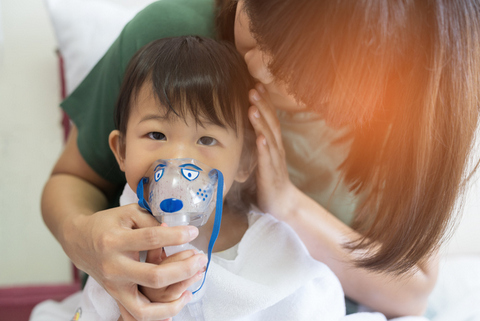
If your child has asthma, the good news is that it can likely be managed with proper use of medication. And even better, the symptoms often ease as kids get older and the airways grow larger (though it’s unlikely to disappear completely).
In order to make sure your child is getting the full benefit of his or her asthma medication, it helps to understand what those medicines are and how they work.
There are two main categories of asthma medication: relievers and preventers. Relievers are taken when symptoms show and help open up the airways to prevent an attack. Common relievers are Salbutamol or Albuterol (Ventolin) and Terbutaline (Bricanyl).
Preventers normally use a corticosteroid medication to control the swelling of the airways and can help stop an asthma attack from developing the first place.
Typically your doctor will prescribe the use of a reliever only when symptoms show, while preventers are taken according to a regular schedule. It’s important that you follow the doctor’s advice.
There are two main ways to deliver the medication to the lungs: inhalers and nebulizers.
Inhalers are useful because they are so compact: you can just keep it in a purse or pocket and use it when needed. They also typically release a metered dose, meaning that provide it’s used correctly there is no need to worry about trying to measure the dosage.
If you are using an inhaler it’s important to shake it properly before use so that the medication is properly mixed, says Dr Anjanette O Reyes-De Leon, Pediatrician and Asthma & Lung Specialist
The problem is that inhalers can be difficult to use properly: you need to take a sufficiently deep breath just as the medication is released to ensure enough of the medicine is drawn into the lungs. This is especially challenging with young children, who may be distressed during an attack and find it hard to breathe in deeply enough and at the right time.
One way to make it easier for kids to inhale the medication from their inhaler is to use a spacer, which is a chamber that attaches to the inhaler to provide more time to breathe it all in. However it’s important to make sure you wash it thoroughly after use. “If you don’t clean the spacer the drug can adhere to the sides and not be inhaled,” says Dr Anjanette.
Nebulizers may not be as compact as inhalers, but they can be great for kids because they dispense the medication over several minutes, ensuring much more of it gets to where it needs to be.
Older kids can use a mouthpiece (just make sure they keep a good seal) but younger kids, typically under the age of about four, should use a facemask or hood.
But even with the nebulizer there are some common mistakes to avoid, says Dr Anjanette. “I sometimes see patients who hold the mask in front of their child’s face rather than placing it over the mouth,” she explains. “That means much of the medication escapes from the side and is wasted.”
You should also make sure your child wears a nose clip if the mask doesn’t cover their nose.
Also note that it’s normal for some liquid to be left in the medication tank once the nebulizer has finished. If you’re using it correctly then this is normal so there is no need to switch the machine back on to try to use up the last few drops. Simply pour the remaining liquid away – you should not attempt to reuse it later.
Whether you’re using an asthma inhaler or a nebulizer for your child, the most important thing is to always take the medication as prescribed by your doctor.
|
Previous article Exercising with Asthma: What you Need to Know |
Next article How to Prevent Chronic Lung Problems in Toddlers |